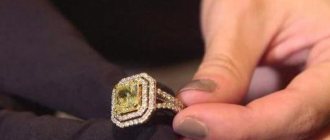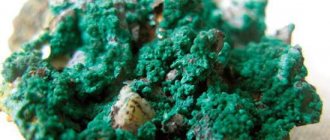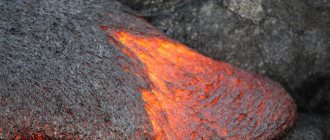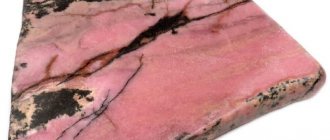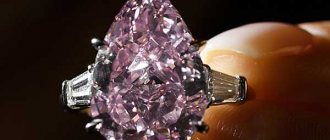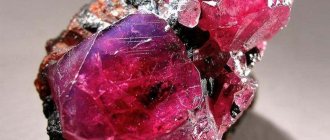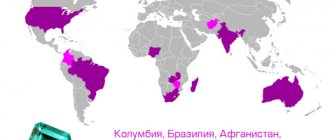Place of Birth
Good emeralds are rare, most of them are found in the Colombian deposits of Tunja (the deposit was discovered in 1555) and Muso (known since 1537), in New Granada, Zambia, Brazil and Egypt.
Emeralds of lower quality are found in Habachtal, in Salzburg (Austria), in the Mourne mountains (Ireland), on Lake Mjoesen (Norway) and in some other places. Emeralds are also mined in Russia, USA, Canada, Australia, Spain, France, Switzerland, Italy, Germany, Bulgaria, Kazakhstan, Pakistan, Afghanistan, India, China, Cambodia, Egypt, Ethiopia, South Africa, Somalia, Nigeria, Namibia, Tanzania, Zimbabwe, Mozambique and Madagascar.
Types of emeralds
Varieties of emeralds found in nature are usually distinguished depending on the place of extraction.
Emeralds of Colombia
Nowadays, from 50 to 95% of all emerald production comes from Colombia (the exact percentage varies greatly from year to year in different directions). Between 2000 and 2010, emerald production in Colombia increased by 78%. In addition to regular emeralds, Colombia also produces trapice emerald, which is distinguished by the formation of crystals in the shape of a wheel with spokes.
Colombian emerald Unguentarium
Emeralds of Zambia
Zambian emeralds are of higher quality than Colombian ones. Zambia's largest emerald deposit is the Kagem mine, which is located 45 km southeast of the city of Kitwe. In 2004, about 20% of all emeralds mined that year were mined here, making Zambia the second “emerald” country after Colombia. In the first 6 months of 2011, 3.74 tons of emeralds were mined in the Kagem mines.
Zambian emeralds
Emeralds of Brazil
Stones mined in Brazil are lighter and much purer than Colombian ones. It was also here that the world's largest emerald was found at 57,500 carats (11.5 kg), named Teodora and approximately valued at $1.15 million.
Emerald Teodora
Emeralds of Egypt
In Egypt, emeralds are mined in mines near El Quseir and Mount Zabara (this deposit, according to hieroglyphic monuments found there, was mined already in 1650 BC).
Deposits near Aswan, 50-60 km from the Red Sea coast, were developed under Pharaoh Sesostris III about 37 centuries ago. Slave miners dug shafts up to 200 meters deep in strong shale, which could accommodate up to 400 people at a time.
It was believed that emerald was afraid of light, so the work was carried out in complete darkness. On the surface, the emerald-bearing rock was split into pieces and smeared with olive oil in order to distinguish the precious crystals.
Ancient Egypt jewelry with emerald
Emeralds of Afghanistan
Or the Panjshir Emeralds, mined in the upper reaches of the Panjshir Gorge, in the area of Pawat, in the villages: Piryakh, Mabain, Zaradhak - 10-13 kilometers southeast and east of the village of Pishgor, in each of which from 20 to 40 mines were concentrated, and Also in the Darkhinj gorge there are significant deposits of emeralds.
During the Afghan War (1979-1989), the development of emeralds in the Panjshir Gorge was under the control of a major field commander, Ahmad Shah Massoud. After mining, the emerald was sent to Pakistan for processing, and from there distributed to international markets.
The amount of funds received for emeralds during this period averaged up to $10 million per year. Mining work on rocky soils was carried out by Japanese drilling rigs with the involvement of Western European engineers.
Afghan emeralds
According to jeweler Oded Burshtein, Afghan emeralds are an equal alternative to emeralds from Colombia and Zambia, they compete equally in beauty, and even better quality, since the crystal of the Afghan emerald is cleaner and denser, and emits more bright shine, has a unique shade and hardness when cut , due to the natural hardness of the crystal itself.
“Only by acquiring an Afghan emerald can you truly appreciate its beauty, rich brilliance, durability and unique green hue. And the fact that there are very few green beryls from Afghanistan on the gemstone market makes them even more desirable.”
— Oded Burshtein “Inbar Fine Jewellery.”
Ural emeralds
The emerald mines of the Urals were discovered by Maxim Kozhevnikov and Yakov Kokovin in 1831 at the confluence of the Tokovaya River and the Bolshoy Reft River, 90 km northeast of Yekaterinburg. They are famous for their emerald crystals, unique in size, as well as alexandrite and phenacite.
Ural emeralds
During the first century of development, more than 15 tons of precious stones were mined here. The emerald mining area is 25 km long and 2 km wide; there are several deposits located here, including Malyshevskoye. In these bedrock deposits, emeralds are found embedded in carbonaceous limestone and mica schist.
Deposits and mining of emeralds
Emerald mining is done almost entirely from host rocks, where emeralds grow in small grooves or on the walls of cavities. Colombia is an international center for emerald production. The Muso deposit, northwest of Bogota, is rich in stones of excellent jewelry quality with a dark green color. Another equally rich deposit is located northeast of Bogota and is called Chivor. Mining does not end at these two mines; there are also quite a few other mines where this precious beryl is also well mined. Brazil has several deposits in the states of Goiás, Minas Gerais and Bahia. The stones here are lighter than in Colombia, most are yellow-green in color and often without inclusions. Brazil also supplies rare cat's eye emeralds and even incredibly rare star emeralds. South Africa's deposits are concentrated in the Northern Transvaal (Limpopo, South Africa). But only 5% of all stones mined from the Cobra and Somerset deposits can boast of good quality. Most stones are too light or dull and are only suitable for cutting into cabochons. There are several deposits in Zimbabwe. The most important is the Sandawana mine in the south of the country. Quite small crystals are found there, but of very good quality. There are also deposits of emerald in Russia, in the Urals, north of Yekaterinburg (Sverdlovsk). Good quality emeralds are rare; most stones are light or dull, suitable only for cabochons. Other deposits are located in Afghanistan, Australia (New South Wales and Western Australia), Ghana, India, Madagascar, Malawi, Mozambique, Namibia, Nigeria, Pakistan, Tanzania, Zambia and the USA (North Carolina).
Magical properties of emerald
Gold ring with emeralds
The magic of emerald extends to many areas of human life.
With it you can:
- Get rid of bad habits and bad inclinations: deceit, tendency to fraud and theft, laziness and debauchery.
- The stone is endowed with the ability to enhance the best qualities that its owner has.
- If the owner of the stone continues to remain in the grip of the above vices, the emerald will not only stop helping him, but will also begin to openly harm him.
Having exhausted its strength, the crystal will simply split.
Also:
- Improve financial well-being.
- Protect your home from danger and black magic.
- Detect adultery.
- Establish friendly relationships in the family.
- Find your life purpose by becoming more reasonable and wiser. It is not for nothing that emerald is called the stone of teachers and sages.
- Establish a connection with the other world and establish contact with the souls of the dead. With its help, people involved in magic and the occult can easily decipher the meaning of signs and answers sent by supernatural forces.
Legends of Emerald
The very name of the emerald stone in old French means a precious green stone. Emerald is considered a sacred stone. The first emeralds known to mankind were found in Egypt on the Red Sea coast.
The mines in which the precious stone was mined, according to the scientific data of archaeologists, were discovered three thousand years BC. Over time, they began to be called “Cleopatra Mines.”
Perfect emeralds, which are currently accepted as the standard for quality and color, if you read articles on engineering-geological surveys, are considered to be stones that are mined in Colombia, at the well-known Chivor and Muse emerald deposit.
Emeralds from Colombian mines are very different from all other stones due to their exceptional quality, emerald green shine with a bluish tint to the color scheme and perfect clarity.
It must be said that rings with emeralds, called “trapiche”, are especially popular.
These are especially rare emeralds from the depths of Colombia with six rayed stars that extend from the center of the stone in rays resembling the spokes of wheels. The stone has asterism. Its rays, like spokes of dark carbon impurities, create a six-pointed star.
Emerald was considered a sacred stone. The Spanish conquerors, who devastated in the 16th century. South America, magnificent emeralds were found there. The indigenous people of the Mantra Valley in Peru kept a huge emerald that inspired awe in all who were honored to look at it. According to legend, it was the size of an ostrich egg and bore the name of the goddess Esmeralda. People worshiped him during religious celebrations and brought small emeralds as gifts to their “goddess” - the “daughters” of the goddess. On certain days they put it on display, worshiped it and revered it. During the conquest of Peru, the Spanish army, led by Don Pedro de Alvarado, destroyed the Temple of the Sun, stealing many emeralds from there, but they never discovered the Temple of Esmeralda. To save their goddess from the conquistadors, the priests hid the object of their worship so much that to this day Esmeralda and her temple have not been discovered.
Magic emerald
The biblical legend says: Satan, during his fall into hell, dropped one of the precious stones from his crown - an emerald. The precious stone turned into a cup, which, under mysterious circumstances, came to the Queen of the South.
Over time, the Queen of Sheba presented the emerald jewel to King Solomon. Solomon was the son of David. And his descendant was Jesus Christ, who inherited this cup. Christ used the cup at his last Holy Supper (Last Supper), teaching his disciples about the breaking of bread.
After sacrificing himself innocent for human sins, Joseph of Arimathea managed to collect the blood of Jesus crucified on the cross into an emerald cup and became the founder of the Order of the Holy Grail... It was believed that it acquired miraculous power - it bestowed many years of life on those who drank from it.
According to one legend, the cup was transferred to Heaven, and according to another, it passed from hand to hand until it was stolen from the last keeper - Perceval, a knight of the Round Table of the legendary British King Arthur.
Holy Grail
Emerald earrings symbolize the Order of the Holy Grail. Unknowing owners of jewelry have the power of magicians and wizards, being in constant contact with the entities of the subtle world, in other words, living in heaven.
People with faith and understanding regarding jewelry earrings with emerald are able to receive and decipher signals from the Universe sent to Earth.
Jewelry with emeralds, in particular earrings, does not tolerate and does not tolerate rudeness or aggression. The stone simply refuses to work to help its owner.
Peruvian emeralds
None of the emeralds from Egypt or Russia can compare in perfection of color with the beautiful stones originating from South America. The most outstanding include five selected stones - “Spanish” or “Peruvian” emeralds, which Fernando Cortes gave to his bride, the niece of the Duke of Bejar, and thereby mortally offended Queen Isabella of Spain, who dreamed of getting them. These stones were lost in 1541. All five stones had different and bizarre shapes. One of them was a bell with a beautiful pearl. The second was shaped like a rose, and the third was shaped like a horn. The fourth was given the shape of a fish with eyes of gold. The fifth - the most valuable and most remarkable - was in the shape of a goblet with a foot of gold; the edge of the bowl was also made of gold.
Duke's Emerald
There is also a legend that Emperor Nero watched gladiator battles through emerald lenses. Today, one of the most famous emeralds in the world, the Duke of Devonshire's Emerald, is kept in the British Museum of Natural History in London.
Amulet
Judging by the ancient Egyptian papyri, emerald has been known to man for at least 6.5 thousand years. It is mentioned several times in the Holy Scriptures, in particular, it is one of the biblical stones on the robe of the High Priest Aaron and is located in the fourth foundation of Heavenly Jerusalem. From prehistoric times to the present day, this gemstone has maintained a prominent position in the gem market, especially in the East. This is the most beautiful and favorite gem of many peoples. Emerald was especially valued in Babylon and Ancient Egypt. The Egyptian queen Cleopatra (69-30 BC) adored emeralds and had a “bad” habit of bestowing close nobles with her image engraved on an emerald as a sign of special favor. Gems for this were mined by numerous slaves in the so-called “mines of Queen Cleopatra”, in the center of today’s Eastern Desert, in the legendary valley of Jebel Zabara.
An emerald set in gold is an ideal anti-demonic amulet and one of the most powerful talismans, stimulating all the best in a person. According to European beliefs, it symbolizes love and success, fidelity and purity; according to Eastern beliefs, it symbolizes faith, courage and foresight; in Russia it is a gem of hope, wisdom and composure, an indicator of female constancy. This stone of joy and fun is designed to inspire the creativity of artists, poets and musicians. According to legends, with due diligence and diligence of its owner and if he has certain abilities, it leads to glory. In the Middle Ages in Europe, it was awarded to winners in bard competitions. Legends say that this gem patronized Petrarch, Dante and Byron.
***
In pre-Columbian America there was a cult of emerald worship. Its rich green color was valued as an expression of life, youth and purity; it was credited with a mysterious power that made a warrior invulnerable in battle, healed illnesses and bestowed happiness. A huge emerald from the Palace of Justice of Tenochtitlan, the size of a palm, was used by the Aztecs to determine the guilt of the defendant (in ancient pre-Columbian America, as in the Old World, the emerald was credited with the gift of foresight).
***
Catholics have legends that the emerald fell from the head of Lucifer himself when he was expelled from paradise.
A beautiful cup (the Holy Grail) was allegedly carved from it, from which Christ himself drank at the Last Supper. Then Joseph of Arimathea collected the blood of the crucified Jesus into this cup, after which it acquired miraculous power - it bestowed many years of life on those who drank from it. According to one legend, the cup was transferred to Heaven, and according to another, it passed from hand to hand until it was stolen from the last keeper - Perceval, a knight of the Round Table of the legendary British King Arthur.
***
Occultists dubbed the emerald the “talisman of Isis” - the goddess of fertility and hearth. In India, it is believed that this gem communicates with the world of spirits; it has strong positive prana, which dispels clots of evil thoughts. According to numerous legends and traditions, he also patronizes mothers and sailors. The one who wears it will not take a wrong step and will not shed innocent blood; it will add courage to a warrior and save him from an enemy ambush, and he will give mercy to the winner. It sharpens the mind and memory, revives ingenuity and intelligence, drives away spiritual melancholy and melancholy, and gives everyone fun and joy. Even seeing an emerald in a dream was considered a sign of fun, especially since the dreams of a person wearing this gem came true especially often. Eliminates sorrows and protects from very annoying visitors, gives insight and intuition, spiritual harmony and hope, develops talent and grace, encourages self-esteem, stimulates speech and eloquence, preserves love and marital fidelity. It was considered the best gift for newlyweds, as it strengthens the feelings of the spouses and preserves the atmosphere of young love between them, shines brighter when love flares up in the heart and splits when the vow of fidelity is violated. Some were convinced that if the image of a bird was engraved on an emerald, then this amulet would greatly help prolong the life of its owner. This gem stimulates the potency of men - it is no coincidence that Francois Rabelais, when describing Gargantua’s clothes, placed an emerald on the buckle of his codpiece. According to some legends, it helps pregnant women, and the Egyptian priests ordered women, while expecting a child, to wear an emerald and then put it in the cradle of the baby; according to others, if a woman wears an emerald ring, she will have few children.
Emerald helps only a noble, pure and spiritually perfect person; it brings only misfortune to an evil and deceitful person. He does not tolerate dishonesty in the behavior of his master, actively fights against his deceit and laziness, perversity and unscrupulousness, and even bursts when satisfying criminal desires. Apparently, this is why it was prescribed to teenagers in order to protect their chastity. He was credited with origins from the rainbow and great healing qualities. It reduces high fever, helps treat inflammation, infection, eczema and a number of female diseases, diseases of the bladder and urinary tract, stops vomiting, promotes the passage and resorption of kidney stones, treats diabetes and burns, lowers blood pressure and helps cure vitiligo and psoriasis; helps its owner with chronic diseases, making drug therapy carried out by attending physicians more effective. It saves from hemoptysis, plague and other pestilences, helps with difficult childbirth, treats fever, leprosy and epilepsy. So, in the old days, attributing healing powers to emerald, they assured that if an epileptic disease was overcome with a stone, then it would crack as a sign of this. Kings and nobles hung emerald amulets around the necks of children quite willingly, just to avoid this disease. Emerald also helps against stomach and liver diseases, bloody diarrhea and black cough, cataract and night blindness, relieves insomnia, magic and the insidious spells of love; it suppresses passion, promotes longevity and maintains well-being. Those suffering from forgetfulness and those with poor eyesight are advised to wear emerald only on the neck; besides, whoever wears an emerald around his neck will be spared hysteria. It is recommended to wear it on the little finger.
***
In ancient Egypt and Greece, emerald was not only a talisman, but also a symbol of the beauty of nature. The Christian religion dedicated the gem to the Apostle James (John). An ancient Georgian collection from the 10th century says that in this precious stone (the Georgians called it “zmuri”), like in a mirror (the same thing was believed in India from ancient times), all the secrets of the past and present are reflected and the future is known in advance. If you look at an emerald for a long time, you will see what is happening at a great distance from you. Indian magicians used emerald to communicate with the astral world and predict the future: in a meditative state, they read with their mind's eye all the information they needed, supposedly imprinted in the crystal of this gem.
***
According to ancient legends, this is the most potent of all antidotes. In Arabic legends, a person who took poison was given two carats of finely ground emerald with wine, camel milk, and, with God's help, he was saved, the poison was driven out of him by perspiration; To heal a person bitten by a snake, you need to mix an emerald with rose water, speak and apply it to the wound. In the Middle Ages, doctors often practiced emerald tincture - a tincture of a gem in alcohol.
***
Emerald gives the power of foresight and symbolizes hope. If you look at him in the morning, then the whole day will be easy and good luck will accompany this person. A 15th-century German poem says that gazing at an emerald arouses strength and inspiration. This is a talisman stone that helps free prisoners, save sailors from storms, and promotes the success of enterprises. In the last century in Brazil, traditions prescribed that doctors should wear emerald rings.
Emerald helps with meditation, therefore, according to Indian beliefs (VI century), it must be carried with you during the study of the Vedas, sacred services and prayers, during sacrificial offerings and in preparation for battle.
***
The power of Isis was personified by a rod (phallic symbol) in the form of an emerald lotus. Isis is also the patroness of gold, so wear an emerald in gold to conceive.
***
The Romans and Greeks were very fond of emeralds, which they called “emeralds,” and often carved gems on them; Pliny and Herodotus spoke highly of emeralds, and Emperor Nero owned a large convex emerald through which he watched gladiator battles. The Great Mogul, the legendary Indian ruler whose wealth was the stuff of legend and was expressed mainly in huge swathes of jewelry, wore a 218-carat emerald on his turban, on which was engraved a sacred text. When the Spaniards arrived in South America, the first thing they noticed was gold and a huge amount of emeralds, which were mined in large quantities in local mines.
***
Ancient people attributed many healing and even magical properties to emerald. So, in a Czech book of the 14th century. it was claimed that the emerald was found in the griffin's nest! The property of emerald is to detect betrayal. This was even elevated to myth: according to legend, when the Hungarian king Bela IV hugged his wife without removing the ring with a huge emerald from his finger, the stone immediately split into three parts. Epiphanius claimed that this gem was able to predict the future, and ancient Armenian manuscripts said that snakes go blind at the sight of emeralds, and with its help a person can survive a snake or scorpion bite. All authors agreed that emerald “cools the mind,” makes its owner more honest and righteous, and brings wisdom - perhaps these were the qualities that A. S. Pushkin valued in his favorite emerald ring. And in the old days, thieves avoided emeralds - it was believed that whoever stole this stone - a symbol of spiritual purity - would bitterly repent.
***
Modern lithotherapists agree with ancient sources who proclaimed emerald to be the main medicine for the eyes: its pure green color really relieves eye strain. In addition, emerald saves from insomnia and nightmares, normalizes the state of mind and calms the nerves, and relieves chronic fatigue syndrome. If you put an emerald in a glass of raw water, you can drink it without boiling - the stone has antibacterial properties, such water treats stomach and bladder inflammation, stabilizes blood pressure. The wearer of jewelry with an emerald gradually improves the functioning of all body systems, stabilizes metabolism, strengthens the heart muscle; emerald rejuvenates and multiplies the years of life of its owner. Without any conventions, emerald can be called a talisman of absolute happiness, good luck and prosperity in all areas of life. This green stone brings material well-being and success in business to the life of its owner, helping in business negotiations; for those who seek recognition in creativity, emerald will bring inspiration, fame, and public attention; Emerald will help scientists and researchers gain wisdom, improve memory and understanding. The stone also works great with those who have devoted themselves to the spiritual path: it reveals to them the secrets of the Universe, introduces heavenly revelations, and sharpens intuition. Traditionally, emerald is a protector both at home and on a long journey, on land and at sea. For those looking for love, emerald attracts happy long-term relationships, protects against betrayal, increases female attractiveness and male strength. And the emerald, as it were, gives silent advice to everyone, without exception, being a direct “conductor” between a person and the Higher Mind.
The main task of the emerald is to fight the bad inclinations of its owner: deceit, a tendency to scam, infidelity in love. If the owner of the stone does not have bad inclinations, the emerald brings him health and good luck, otherwise it can send disasters to the person. This gem is able to dispel any negative energy, cleanse a person’s biofield and his home from negativity. Emerald protects the family hearth: it preserves marital ties, maintains peace and harmony in the family, and promotes procreation. This stone helps people with developed intuition to get into contact with the souls of the dead, with creatures from the subtle world, and gives the ability to decipher signals sent to Earth by the forces of the Universe. Emerald is a very delicate stone. He does not tolerate aggression and rudeness. If you wear the stone constantly for 2-3 months, a person can correct these negative character traits.
Probably, emerald is the most mysterious stone in human history, and at the same time the most integral: after all, all researchers agree that emerald, with all its wonderful properties, does not tolerate deceitful and treacherous people, and mercilessly leaves such an owner. The unique emerald figurines of the cruel Cortes have been lost, the emerald lens of the crazy Nero has gone under water, and if there once was an emerald from the crown of Lucifer, it is now impossible to find it. For those who are whole in soul and true to themselves, their word and their honor, the emerald will reveal its secrets and bestow all possible blessings - in its green depths we can, as in the famous emerald tablets of the god of wisdom Hermes, where all the wisdom of the world was written down, read answers to your innermost questions, and perhaps finally find your own paradise on earth.
Medicinal properties
Brooch with emerald Hooker
The value of natural emerald lies not only in its beautiful appearance, but also in its healing power. Since ancient times, the powder from this nugget was used as an antidote, a remedy against night blindness, and an eyesore. Healers have long believed that if you hold a stone in your mouth, you can get rid of diabetes, dysentery and even psoriasis.
The healing properties of the gem are not limited to this. It is used for different conditions:
- therapy for mental disorders;
- emerald has a pronounced antibacterial effect;
- helps normalize blood pressure;
- relieves pain in the stomach and joints, improves memory, develops flexibility of thinking;
- eliminates insomnia;
- relieves allergies, asthma, bronchitis;
- relieves inflammation in genitourinary pathologies.
What is the difference between beryl and emerald?
This question is actually not entirely correct. Why? Let's explain now.
What is beryl? This mineral in its pure form is a translucent colorless stone. Its chemical formula is as follows: 67% silicon oxide, 19% aluminum oxide and, finally, 14% beryllium oxide. It is widely used in the metallurgical industry; beryllium metal is obtained from it, which in turn is indispensable in the creation of light alloys.
Something doesn’t smell like precious emerald here yet, you’re probably thinking right now. Indeed, beryl in its pure form is an industrial mineral, nothing more. But! As soon as an impurity is added to the pure formula, it immediately asks to be picked up by jewelers. This is such a metamorphosis.
Impurities can be very different and they all give rise to different types of beryl, the most common of which got their name. Emerald, aquamarine, morganite, heliodor... These are all types of beryl.
Thus, any emerald is beryl, but not all beryl is an emerald.
However, if we put aside the unnecessary poetics, it is worth saying that strictly speaking, the differences can be identified. Beryl and emerald differ in color, scope of application and chemical formula.
- The first is translucent, used in the metallurgical industry and consists of oxides of silicon, aluminum and beryllium.
- The second is deep green, used in jewelry, and the general chemical formula is supplemented by the presence of impurities in the form of vanadium and chromium.
Talismans and amulets
Gold belt of the Shah with an emerald weighing 176 carats.
Kept in the National Treasury of the Central Bank of Iran in Tehran For a long time, the emerald has been considered a talisman for mothers.
By protecting a woman during pregnancy and during childbirth (thanks to its effect, the threat of premature birth disappears, pain during contractions is reduced, and ruptures are minimized), it contributes to the birth of a healthy child.
Subsequently, the gem will help the mother not only better understand the needs of the baby, but also build a harmonious relationship with him.
Also:
- A crystal placed at the front door or lying on the desktop is an excellent amulet that protects the house from evil spirits and unkind people.
- A young family using an emerald as a talisman will be able to avoid betrayal, conflicts and quarrels, and will find happiness and harmony. It will protect spouses who have lived together for more than one year from fading feelings: it is not for nothing that the 55th anniversary of marriage is called the emerald wedding.
- For unmarried girls, the gem will become a reliable amulet that helps maintain chastity.
- The emerald amulet will bring wealth and good luck to travelers, and will protect sailors from bad weather and storms.
- Creative people and businessmen can use it as an amulet that brings inspiration and success.
The crystal, which plays the role of a love amulet, is recommended to be worn on the ring finger or little finger.
Emerald - unlike most minerals - can be passed on by inheritance. All its positive qualities are preserved.
Areas of application
Emerald crystals
The main use of emeralds is in the production of jewelry.
Stones of a deep green tone are most valued; even if there are inclusions, they are preferred to be pale colored, even almost transparent.
To process transparent emeralds, the following types of cuts are used: step, rectangular “emerald” or “square”, less often diamond. Translucent stones are processed in the form of cabochons.
Dichroism must be taken into account.
It should be noted that only a very small part of emeralds is processed in the countries where they are mined. The highest quality emeralds are processed in Idar-Oberstein (Germany), Ramat Gan (Israel), London, Geneva and New York. Medium and low quality stones, which make up the bulk of mined minerals and are suitable for making cabochons, are processed in India. They are often combined with diamonds in jewelry.
The luster of emerald is usually vitreous. The physical properties, especially density, light and birefringence, as well as pleochroism, vary somewhat among emeralds from different deposits.
The quality of jewelry stones is assessed in accordance with international requirements. The most valuable are bright green crystals with minor inclusions. Bright color is the main factor influencing the price.
Emerald inserts adorn many pieces of jewelry stored in museums or state treasuries.
Emeralds are also used to create solid-state lasers. Synthetic emeralds are used in quantum electronics.
PRICE
Buying an emerald is not always easy: it is one of the most highly valued gems. Large, defect-free emerald crystals, which have an even, bright color and high transparency, are sold more expensive than diamonds of similar quality. Deposits of emeralds are found everywhere. However, truly valuable stones (dense green, without any hint of blue) are mined in Colombia. It is not necessary to fly to Bogota to buy a natural gem. Fine quality emeralds are mined in abundance in the Urals, Asia, and Africa. The most important criteria for assessing the quality of an emerald are color, transparency, and weight. Price range USD: 220.00 – 290.00. Price range RUB: 6100.00 - 9484.00.
The price of a stone consists of the following characteristics:
- Color. This indicator is the most important for colored gemstones. Most buyers want a bright stone with a rich color that immediately attracts attention. Thus, the brighter and more saturated the color of the stone, the more expensive it is, naturally.
- Purity. Everything here is extremely ambiguous. In general, it is believed that there should be no inclusions in the stone. However, a trivial example is amber. If there are inclusions, its price increases significantly. In the case of emerald, inclusions can either increase or decrease the price of the stone.
- Treatment. Untreated emeralds are several times cheaper than processed ones.
- Weight. The larger the stone, the more expensive it is. Cut. Naturally, a beautifully and high-quality processed stone costs more.
Emerald products and jewelry
Tiara of the Duchess of Anjou, contains 40 emeralds and 1031 diamonds.
Made in 1819-1820. in Paris Emerald is used for jewelry of all types. They are worn on special occasions, with a wardrobe of the same level.
Pairs with rubies or sapphires. The height of chic is a scattering of diamonds around a stone in gold or platinum.
Gold jewelry is the best gift for a woman on a special occasion. Earrings, bracelet or necklace are given for the birth of a child. An emerald ring is bought for an engagement or wedding.
The men's assortment includes a massive platinum or silver ring, a tie clip, and cufflinks with a rectangular translucent emerald.
The modern bohemian trend is deliberately careless large jewelry with unpolished inserts. Silver is light or blackened.
The stone is valued based on color and origin (stone cost per carat):
- bright green - $2000;
- pale - $500;
- artificial - $200.
Price of emerald jewelry:
- in gold: earrings - $130-500, ring - $100-300;
- with diamonds: ring - $200-500, pendant - $70-200, earrings - $150-700.
Silver accessories are equipped with nanocrystal inserts. The price of such emeralds is several times less than natural material. For example, a ring costs about $30, earrings - $25-30.
How to distinguish an original from a fake
Colombian emeralds
The stone’s belonging to the huge beryl family, as well as developed technologies for the production of artificial stones, create a real haven for unscrupulous sellers. They can sell cheaper emerald “relatives” at a price close to the cost of the gem. Also, many of them sell laboratory crystals or even pieces of glass.
In order not to make a mistake when buying an expensive gem, you need to remember what an emerald looks like if you examine it carefully.
- Emerald tends to change its hue depending on the angle at which it is viewed. This property is called dichroism. By turning the stone, you can see how it turns from dark green to bluish or vice versa.
- Natural emeralds, at least jewelry examples, always have a velvety hue. Light green, light green, “bottle” stones are crystal-like beryls of cheaper varieties, or synthetics.
- Natural gems are almost never perfect. Those that do not have cracks, air bubbles, abrasions or “grains” of a different color are more expensive than diamonds. You will never see them in regular jewelry stores; these are collector's items. Defects can be examined with a magnifying glass. If they are not there, you have a laboratory stone in front of you.
South African emeralds
Its passport can also tell a lot about a gem. If it contains the phrase “hydrothermal emerald,” it means that the stone was grown in a laboratory. This crystal is completely identical to the best specimens from Colombia. The technologies used to produce these minerals are considered a trade secret.
Gems of this type are free from flaws, have a rich color and a bright play of light. But their cost is much lower than that of natural emeralds, so when they try to sell such a specimen at the price of a genuine one, it is a fraud.
For those who plan to buy a crystal for use in magical practices, hydrothermal stone is not suitable. Only natural gems have magical properties. This is due to the fact that real minerals grow in the earth for thousands of years, absorbing cosmic and earthly energy. Laboratory specimens, no matter how beautiful they are, simply do not have the time to acquire the appropriate energy.
DESCRIPTION OF EMERALD
Emerald is a precious stone:
- for geologists - a mineral;
- for gemologists - a transparent variety of beryl.
The origin of the name of the mineral is interesting:
- Previously, the stone was called “smaragd”, from the ancient Greek σμάραγδος - smaragdos.
- Now the gemstone is called an emerald, but in some countries - for example, in Germany - the gem is more often called emerald.
- It is still unknown exactly which people gave the name to the crystal. Linguists trace connections with Semitic, Persian roots and Sanskrit.
There are 2 main schools of gemology:
- true emerald is only one whose green color comes from chromium;
- with admixtures of vanadium, the stone can also be called emerald.
The herbal shades, shine and transparency of the stone are mesmerizing. The color of the crystals is given by impurities of chromium and vanadium.
History and deposits of emeralds
Humanity has known the stone for a long time:
- Egypt is home to the world's oldest emerald mines.
- Queen Cleopatra adored crystals, and Egyptian mines were named after her.
Emerald occurs in nature:
- in crystals;
- in intergrowths of crystals grown into mica, quartz or feldspar.
According to Fersman's classification, emerald, diamond, sapphire, noble spinel, alexandrite and euclase stones are classified as first-order gemstones.
How is the world production of emeralds distributed:
- Colombia 48%;
- Zambia 19%;
- Russia 10%;
- Zimbabwe 10%;
- Brazil 10%;
- other countries 3%.
The figures are only official: no one knows the smuggling market.
Half a billion US dollars worth of emeralds are mined in the world every year.
Colombia
- Colombia traditionally produces the world's best emeralds with a delicate bluish tint.
- Mining is usually done the old fashioned way - with a shovel.
- There are 7 main deposits in the country.
- The Muzo mine has been known since the time of Columbus, and the best rock in the field is Chivor.
Russia
There is only one deposit in Russia where emeralds are mined.
This is the Malyshevskoye field in the Urals.
Record-breaking emeralds
- The largest emerald was found in Brazil, and it weighed 7.5 kg.
- The second largest stone, “Miner’s Glory,” is stored in Gokhran, weighing 6.4 kg.
- The third heaviest is the African gem: 4.8 kg.
Emeralds of antiquity with world fame
- The “Emerald Goddess” was defeated by the Incas so that she would not fall into the clutches of the conquistadors.
- The notorious Emperor of Rome Nero, due to poor eyesight, used a thin plate of gemstone instead of glasses.
- “Great Mogul”, a noble dark green carved crystal weighing almost 218 carats, was brought to India by the Spaniards. The rectangular stone was decorated with an exquisite floral design on one side and an inscription in Arabic on the other.
- The platinum “Hooker” brooch, named after the last owner, includes an amazing crystal. There are 109 small diamonds around the emerald. The history of the brooch is long and complicated, but it is now in the National Museum of Natural History in the United States.
Angelina Jolie at the Oscars wearing an emerald set from Lorraine Schwartz worth $2.5 million.
Types of emeralds
What emeralds look like is not always obvious: the varieties are so diverse that you can get lost in them. Therefore, gemologists create stone classifications, scales for determining purity and transparency, standards and many other tools for determining the quality and price of a crystal.
Standards for determining the true color of a crystal according to the GIA world classification of emeralds:
- Only those crystals with color tones from 3 to 8 and color saturation from 2 to 5 can be classified as emeralds.
- The best gems have the third purity group, the best color is bG 5/5.
In Russia, to determine the value of a stone, they use the technical specifications TU 95 335-88: from the first to the fifth category.
- The first category is the highest quality emerald, a green emerald with a rich pure color;
- in the fifth group - stones that have a faded color: often grayish, yellowish. Such stones are generally not considered emeralds and are transferred to the beryl group.
Based on color and shade, the following varieties of emerald can be distinguished:
- green rich bright color.
- Bright green saturated color with a subtle blue tint.
- Green.
- Green color with a blue tint.
- Green with a distinct blue tint.
- Yellowish-green, grayish-green.
The difference between these colors is barely noticeable: only experienced gemologists can determine it.
The gem is also classified according to its deposits:
| Colombia |
|
| Colombia |
|
| Zambia |
|
| Zimbabwe |
|
| Brazil |
|
| South Africa |
|
| Russia |
|
We recommend: HERKIMER DIAMOND
Physico-chemical characteristics
The chemical formula of emerald is Be3Al2Si6O18.
The mineral is a silicate of beryllium and aluminum.
The mineral can serve as beryllium ore, like chrysoberyl, for example. However, so far no one is going to grind precious crystals to extract beryllium, which is needed by industry and is extremely rare in nature.
Chemical composition of emerald:
- 67% silicon dioxide;
- 14% beryllium oxide;
- 19% aluminum oxide.
The amount of chromium oxide largely determines the color of the mineral:
- in light-colored emeralds the Cr2O3 content is from 0.15%,
- in stones of a thick green color - reaches 0.6%.
The color of the stone is affected by vanadium and iron impurities.
Some gemologists are confident that only crystals whose color is determined by their chromium content can be called emeralds.
Emerald color
The concept of “color” is divided into three parts:
- saturation;
- tone;
- lightness
Gemologists have a stone color scale:
- from 0% - no color, to 100% - black opaque.
- According to this scale, the color of the best emeralds is 70-75%.
Emerald colors range from dark to light green; what color the crystal has is determined by the presence of chromium and vanadium impurities.
There are stones that are very light, straw-yellow in color. This light emerald is called “milky emerald.” They generally have poor transparency.
In any emerald there is always green color.
Emerald Density
The density of the mineral is 2.69-2.78 g/cm³: it depends on the crystal lattice + the size of the ions and atoms that make up the crystal.
There is a calibration scale for mineral densities:
- light - density less than 2;
- normal - density from 2 to 4;
- heavy - density more than 5.
For example, a diamond crystal is less dense than a zircon crystal.
A crystal is considered “good” depending on its color and transparency, and emerald crystals with a higher density are considered the best.
There is a direct relationship between deposits:
- crystal density in Colombia - 2.72;
- in Brazil - 2.67;
- in Africa - 2.77.
The crystal density is increased by rubidium and cesium impurities.
The brightness of the stone, according to some gemologists, also depends on impurities.
Purity
- The purity of the stone is not as important for emeralds as for many other gems. Inclusions in crystals are not considered a serious flaw; rather, they indicate the authenticity of the stone.
- A pure emerald free of inclusions is extremely rare.
- The production of such specimens per year is considered piecemeal, the price per carat is tens of thousands of US dollars. Provided that the emerald is large enough.
Cut
A faceted emerald allows you to admire the beauty of the gem.
| STEP | As a rule, gems are processed with an “emerald”, step cut. |
| RECTANGULAR | A rectangular cut is also possible: “square” or diamond. |
| CABOCHON | If the stone is of poor quality, with cracks and inclusions, or cloudy, such crystals are processed in the form of a cabochon. |
Very large stones are sometimes used to make boxes, vases and other delightful trinkets. So, in Milan in the 16th century. A vase was made from a single Colombian emerald weighing 2,681 carats.
Resistance to external influences
- Emerald will resist acids and alkalis,
- he is not afraid of an aggressive environment;
- however, at temperatures above 700 degrees, the mineral will permanently lose color.
- Afraid of impacts: it may break or crack.
Artificial emerald
Synthetic cut emerald
Artificial emeralds are similar to natural stones, but their density and refractive indices are lower than those of natural ones. Synthetic emeralds have a very distinctive rich bluish-green color, although some Colombian emeralds have similar properties. Through the Chelsea filter they appear intensely red - significantly redder than most natural emeralds.
Regular and artificial emeralds are distinguished using filtered ultraviolet radiation (360 nm), to which real emeralds do not normally react, but synthetic emeralds exhibit chestnut-brown luminescence.
However, this rule is not always confirmed. Many natural emeralds can also react to filtered ultraviolet light.
Currently, industrial methods have been developed for the synthesis of emerald, which is indistinguishable from natural in color and superior in quality.
But the cost of synthetic emerald on the international market remains tens of times lower than natural emerald, since natural emerald is less common. It is possible to grow synthetic emeralds of quite large sizes, up to hundreds of carats.
Artificial emeralds
The production technology is kept secret. For example, the Carroll Chatham Laboratory, California, USA, only accepts workers with incomplete secondary education. It is known that crystals are grown using the flux method in a platinum crucible on a natural emerald seed. In addition, crystal growth is very sensitive to voltage surges.
Since the second half of the 19th century, specialists from several countries have tried to solve the problem of emerald synthesis. The first successful experiments date back to 1888 (France), but a full-fledged artificial emerald was obtained only in 1935 in Germany by the scientist G. Espigue and his colleagues and was named “igmerald” - after the first letters of the company name and the English “emerald” - emerald . Since 1940, the Americans have established industrial production of Igmerald.
Today, emeralds are also produced in Germany, France, Switzerland, Japan, Russia and Belarus.
The largest producer of water-based emeralds in the world is the Tairus company, a joint venture between Russia and Thailand. The company managed to synthesize emeralds that are no different in composition from Colombian ones.
INTERESTING FACTS
- According to legend, the Queen of Sheba (the legendary ruler of the Arabian kingdom) preferred emerald to all other precious stones. Her best outfits were embroidered with emerald embroidery, on which more than 1000 maids worked.
- The National Bank of Tehran today houses a hairpin inlaid with three large emeralds that belonged to the founder of the Mughal Empire, the Great Mughal Babur. For many years it was used during the coronation of the Persian shahs.
- Emerald is considered the stone of fidelity, and according to one legend, this gemstone can break when one of the spouses of a loving couple is unfaithful.
- One of the legends says that the famous Holy Grail was made from an emerald that fell from the crown of the overthrown Satan.
- Ancient magicians believed that emerald could blind a snake and deprive it of its sight.
- The Roman historian Tacitus claimed that the emerald goblet, neutralizing the poison, more than once saved the life of Emperor Nero, whom they tried to poison.
- According to legend, emerald was the sacred stone of the legendary Atlanteans.
- In 1993, an emerald weighing 1200 grams was found at the Malyshevsky mine. It was named "President" in honor of Russian President Boris Yeltsin.
- The world's largest emerald crystal weighing 28 kilograms was found in Brazil in 1974.
- The first artificial emerald was grown in 1935 in Germany. Today, such synthetic gems are produced in many countries on an industrial scale.
How to care for stone
Products with emerald
Emerald is durable and difficult to damage at home. However, it does not tolerate cosmetics, water, or household chemicals. Loves darkness and coolness. Pebbles and jewelry deserve proper care:
- When washing, cooking, or other household work, jewelry is removed;
- put on jewelry when makeup is applied: powder, eye shadow, blush are destructive to the gem;
- store jewelry in a casket or other durable closed box; Alternatively, wrap each item in a soft cloth.
Contaminated jewelry is soaked in warm soapy water. If necessary, rub lightly with a soft cloth or brush.
It is worth investing in a special protective layer - it is applied to items with emerald by jewelers.
Emerald care and cleaning
Precious emeralds are pressure sensitive and vulnerable to household chemicals. Although emerald is one of the hardest stones, it still requires careful handling due to its natural disadvantages and features. Particular attention should be paid when wearing the stone, because... it is the most fragile among beryls. Remove jewelry when cleaning or doing anything with harsh chemicals such as bleach or acids. You can use warm soapy water and a soft cloth to clean the stones. Be sure to rinse the stones well so that no soap remains on them. Do not use ultrasonic or steam cleaners on your emeralds because... this can remove the oil that is used to refine the stones. Traditional oiling is stable, but not permanent, meaning that you will need to oil the stones from time to time to restore their original color and shine. Always remove emerald jewelry before exercising, cleaning, playing sports, or other very active activities. Emeralds can easily scratch other stones, but can also be easily scratched by other, harder stones such as topaz or sapphire. To prevent such incidents, store emeralds separately from other stones and, if possible, wrap them in soft cloth.
Compatibility with other minerals
Being a mineral of the air element, emerald does not combine well with Water stones: opal, pearl, topaz, amethyst, heliotrope, alexandrite.
In jewelry, cut emerald is ideally combined with diamonds, as well as with stones of the same category, which includes: sapphire, peridot and ruby.
Agate makes an equally harmonious pair for it.
How to wear it correctly
It is necessary to wear emerald jewelry correctly, taking into account the properties of the stone:
- It is advisable to have a full set of jewelry - it is stylish. In such a situation, the stones have the opportunity to better influence the owner.
- If you want to have a stone in the form of a talisman, it is better to keep it untreated.
- Be sure to consider whether the mineral is suitable for your zodiac sign. Scorpios and Capricorns should not purchase such an amulet.
- Wear jewelry on the little finger, but since this nugget is a love amulet, it is allowed to be worn on the ring finger.
Old names of emerald stone
The name of the emerald stone has a completely understandable meaning. Having gone a long way from the Greek smaragdos to the Persian zumurrud and the Turkic zumrut, it originally meant a color similar to greenery. The now obsolete word “smaragd” in the Old Church Slavonic language was used to describe any green stone. A recognizable modern version of “izumrut” already appears in ancient Russian texts.
A variety of the mineral beryl, colored green by chromium oxide, is what emerald means to specialists. And for sophisticated jewelry connoisseurs and simply lovers of jewelry, emerald is a wonderful stone, exciting with its beauty. No wonder the Roman writer Pliny the Elder noted its magnificence, calling it “delighting the eye without fatigue.” Thanks to the green depth of its color, it has become a real talisman in the Middle East, because for its inhabitants green is a sacred color.
Who suits the name
An emerald engagement ring with a diamond in gold
Emerald is ideal for a woman named:
- Julia. The stone will not only protect her from all kinds of troubles and misfortunes, but will also attract good luck to her.
- Isabel. Having cleansed the aura, the mineral will drive away negative energy from it, help preserve the family hearth, impart composure and give impetus to inspiration.
- Elena. The support of the stone will make her more balanced and wise.
The emerald will become a talisman for a man named:
- Peter. Having gotten rid of bad thoughts and sadness, he will gain hope and the ability to think soundly.
- Hermann. The crystal's help will open the way to the future, giving him wisdom and hope.
- Klim. The stone will not only help him overcome his melancholy, but will also make him forget about love failures.
Emerald and zodiac signs
Ring with an emerald
Emerald is a friendly stone, but it is not ideally compatible with all Zodiac signs. The mineral best protects the following signs:
- Twins. Excessive aggression and hot temper of this sign will be replaced by wisdom and composure under the influence of the talisman. Geminis will experience better concentration, improved memory, and will become mentally calmer, more cheerful and responsive. This is a plus for communicating with others.
- Cancer. For hot-tempered and sometimes aggressive Cancers, emerald will give balance and harmony. The amulet will make representatives of the sign self-confident, friendly and open, which will help Cancers find good friends.
- Calf. For them, emerald will become a source of vivid emotions and impressions. The talisman will strengthen intuitive thinking, attention, memory, which is important for concentrating on a goal and moving towards achieving it.
It is not recommended for Scorpios to wear emeralds. There are many more suitable minerals for them. Other signs may not feel the influence of the stone at all or feel it less strongly.
| Zodiac sign | Compatibility> (“+++” is ideal, “+” is good, “-” is bad) |
| Aries | + |
| Taurus | +++ |
| Twins | +++ |
| Cancer | +++ |
| a lion | + |
| Virgo | + |
| Scales | + |
| Scorpion | — |
| Sagittarius | + |
| Capricorn | + |
| Aquarius | + |
| Fish | + |
Variations of emerald and related minerals
Emerald belongs to the important group of beryls. There are at least 5 different representatives of gem-quality beryl, many of which are classified by color and coloring agents, such as pink morganite and red bixbite. There are also many other minerals that can be confused with emerald, such as green quartz, demantoid, tsavorite, tourmaline, chrome diopside, grossular, uvarovite, verdelite, fluorite, hiddenite and peridot (olivine).
The most famous varieties
Aquamarine, golden beryl and green beryl are the most famous minerals from the same group.
Lesser known varieties
Goshenite, morganite, heliodor, bixbite and trapice emeralds are the least known minerals of the beryl group.

